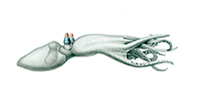Thank you for visiting the Seafood Selector. EDF is planning a new approach to providing information to consumers about good seafood choices. Please come back soon for updates.
Octopus

Octopus
Recommended servings per month
| Contaminant | Men | Women | Kids 6-12 | Kids 0-5 | |
|---|---|---|---|---|---|
| Octopus | Mercury | 4+ | 4+ | 4+ | 3 |
| Giant Pacific Octopus (Alaska, pot) | Mercury | 4+ | 4+ | 4+ | 3 |
| Giant Pacific Octopus (British Colombia) | Mercury | 4+ | 4+ | 4+ | 3 |
Eco details:
- Populations of the common octopus in many areas have been overexploited and mismanaged.
- All octopus destined for the U.S. sushi market is processed in Japan and labeled "Product of Japan," so identifying the origin of octopus sushi is nearly impossible.
- Some inshore octopus fisheries are sustainable and have a moderate impact on the environment, but most octopus fisheries, especially those offshore, exploit already low stocks, harm habitat and have high bycatch.
- Populations in Mauritania and Vietnam are in poor shape.
- Spain appears to have the most stable octopus populations.




